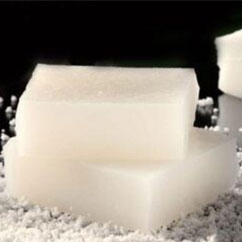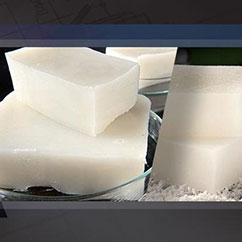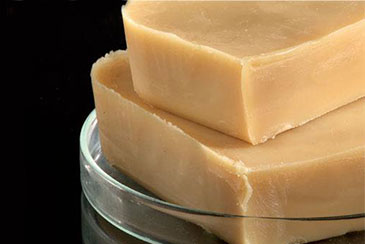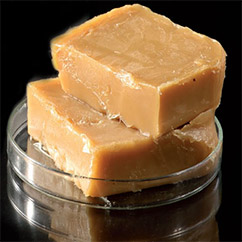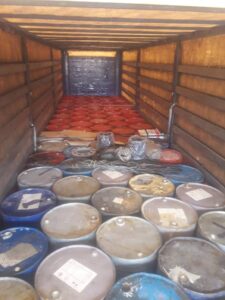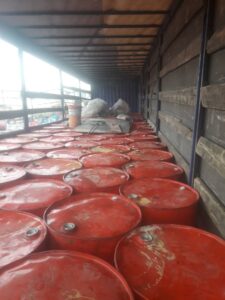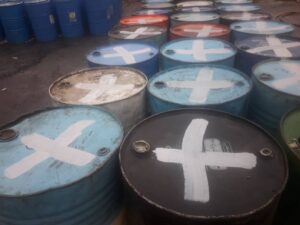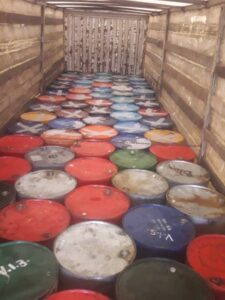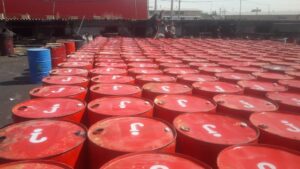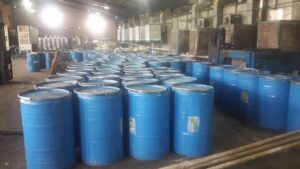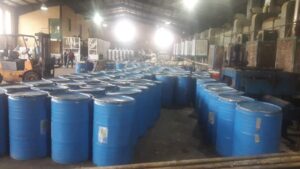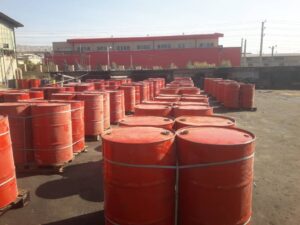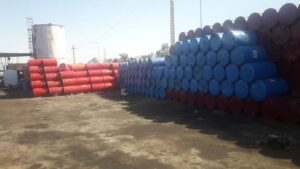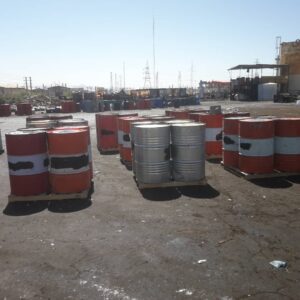Antiozonants Paraffin Wax
Suggests
Don’t see the Parrafin wax you’re looking for? We make several Paraffin Wax that are not listed here.
Connect To KhavaranParaffin
Custom Blends. Custom Properties Of Antiozonants
Don’t see the Paraffin Wax you’re looking for? Contact khavaranparaffin
If you don’t see a specific wax listed here, contact khavaranparaffin. We make several paraffin waxes that are not listed here.
Antiozonants Paraffin Wax
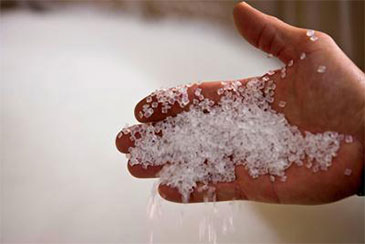
Khavaran Paraffin offers a wide range of antiozonant waxes aimed at the rubber sector (tyres, technical rubber and footwear).These products are specially designed to prevent ozone damage to unsaturated rubber parts under static conditions such as storage, preventing the appearance of cracks and ageing in the final product.We design and produce made-to-measure products, selecting the appropriate wax according to the client’s specific operating conditions and leveraging the knowledge and experience that we have acquired through more than 20 years in manufacturing and sales at worldwide level.
Antiozonants Khavaran Paraffin Packing Formats
Khavaran Paraffin offers a full range of paraffin waxes in a variety of packaging formats. These include: bulk liquid (via tank truck or railcar), slabs (5 kg) in carton boxes/pp bags, free-flowing granules (packaged in bags). Bulk Packaging in Jumbo bags 600-1000 kg is also available.
Antiozonants Khavaran Paraffin Quality Control
Khavaran Paraffin Co. guaranty’s the quality of Residue Wax (Foots Oil). We welcome our customers to arrange of an international inspector/s such as SGS to check quality and quantity at the time of production and loading. Alternatively, we can arrange such a service upon request.
IDENTIFICATION: PRODUCT IDENTIFIER AND CHEMICAL IDENTITY
Product Name: PARAFFIN WAX AND HYDROCARBON WAXES – FULLY REFINED AND/OR SEMI REFINED Recommended Use of the Chemical and Restriction on Use: Candle making, crayons,water proofing agent in textile and MDF industries, electrical insulator, coating agent, production of adhesives etc. Details of Manufacturer or Importer: Palayesh Paraffin Khavaran Co. West 3rd Floor, No 251, Shahid Beheshti Avenue Abbas Abad, Tehran-Iran Phone Number: +98 910 145 0130 Emergency telephone number: +98 21 88500600
HAZARDS IDENTIFICATION
Hazardous Nature: The substance is not classified according to the Globally Harmonized System (GHS). Label Elements Signal Word Void Hazard Statements Void
COMPOSITON AND INFORMATION ON INGREDIENTS
Chemical Characterisation: Substances CAS No. Description 8002-74-2 Paraffin waxes and Hydrocarbon waxes
FIRST AID MEASURES
Inhalation: If inhaled, remove to fresh air. If not breathing, give artificial respiration. If breathing is difficult, give oxygen. Seek medical attention if breathing problems develop. Skin Contact: In case of skin contact, immediately remove contaminated clothing and wash affected areas with water and soap. Seek medical attention if symptoms occur. Eye Contact: In case of eye contact, rinse cautiously with water for several minutes. Remove contact lenses, if present and easy to do. Continue rinsing. Seek medical attention. Ingestion: First aid is not normally required if a small amount of solid materialis swallowed. If molten material is swallowed seek immediate medical attention. Do not induce vomiting. Never give anything by mouth to an unconscious person. Information for Doctor Symptoms Caused by Exposure: Inhalation: Vapours emitted from molten wax may cause respiratory irritation. Skin contact: Direct contact with molten material may cause thermal burns. Eye contact: Direct contact with molten material may cause thermal burns. Vapors from molten wax may cause watering of the eyes. Ingestion: Ingestion of molten material may cause thermal burns. Ingestion of large quantities will produce a laxative effect and may be irritating to the digestive tract. Product Name: PARAFFIN WAX AND HYDROCARBON WAXES – FULLY REFINED AND/OR SEMI REFINED
FIRE FIGHTING MEASURES
Suitable Extinguishing Media: Foam, dry chemical, carbon dioxide, sand and water fog. Specific Hazards Arising from the Chemical: This material may burn but will not ignite readily. Hazardous combustion products include oxides of carbon and small amounts of oxides of sulphur and nitrogen. Special Protective Equipment and Precautions for Fire Fighters: Wear Safe Work Australia approved self-contained breathing apparatus and full protective clothing.
ACCIDENTAL RELEASE MEASURES
Personal Precautions, Protective Equipment and Emergency Procedures: Wear Safe Work Australia approved respiratory protection and full protective clothing. Evacuate all non-essential personnel from affected area. Do not breathe vapours. Ensure adequate ventilation. Extinguish all sources of ignition. Avoid sparks and open flames. No smoking. Environmental Precautions: In the event of a major spill, prevent spillage from entering drains or water courses. Methods and Materials for Containment and Cleaning Up: Sweep up and place in a suitable container for subsequent disposal. Do not generate dust. Provide adequate ventilation.
HANDLING AND STORAGE
Precautions for Safe Handling: Use of safe work practices are recommended to avoid eye or skin contact and inhalation of dust /vapours. Food, beverages and tobacco products should not be stored or consumed where this material is in use. Always wash hands before smoking, eating, drinking or using the toilet. Wash contaminated clothing and other protective equipment before storage or re-use. Provide eyewash fountains and safety showers in close proximity to points of potential exposure. Conditions for Safe Storage: Store in a cool, dry and well ventilated area. Keep container tightly closed when not in use. Protect from heat, sparks, open flames and other sources of ignition. Keep away from strong oxidising agents.
EXPOSURE CONTROLS AND PERSONAL PROTECTION
Exposure Standards: 8002-74-2 Paraffin waxes and Hydrocarbon waxes NES TWA: 2 mg/m³ Engineering Controls: Provide exhaust ventilation or other engineering controls to keep the airborne concentrations of vapour below occupational exposure standards. Personal Protective Equipment (PPE): Respiratory Protection: No respiratory protection is required when working with the solid material. If airborne concentrations of wax fumes generated from molten wax, are expected, a Safe Work Australia approved air purifying respirator with a dust/mist/fume filter may be used. See Australian Standards AS/NZS 1715 and 1716 for more information. Product Name: PARAFFIN WAX AND HYDROCARBON WAXES – FULLY REFINED AND/OR SEMI REFINED Skin Protection: Not normally required for solid material. The use of thermally resistant gloves and protective clothing is recommended when there is potential for exposure to molten wax. See Australian Standards AS/NZS 2161, 2210.1 and 2210.2 for more information. Eye and Face Protection: Safety glasses with top and side shields or goggles. See Australian Standards AS/NZS 1336 and 1337 for more information.
PHYSICAL AND CHEMICAL PROPERTIES
Appearance: Form: Solid – slab or pastille Colour: White Transparent, grey or yellow Odour: None – Characteristic waxy odour Odour Threshold: Not determined. pH-Value: Not applicable. Melting point/Melting range: 50-68 °C Oil Content/ Oil Content Range: From 0.5% to 30% oil content Flash Point: Above 280 °C Flammability: This material may burn but will not ignite readily. Auto-ignition Temperature: >300 °C Decomposition Temperature: No information available Explosion Limits: Lower: Not determined Upper: Not determined Vapour Pressure: Not applicable. Bulk Density: No information available Relative Density at 20 °C: 0.80-0.9 g/cm³ Vapour Density: Not applicable. Evaporation Rate: Not applicable. Solubility in Water: Insoluble
STABILITY AND REACTIVITY
Possibility of Hazardous Reactions: Hazardous polymerisation will not occur. Chemical Stability: Stable at ambient temperature and under normal conditions of use. Conditions to Avoid: Heat, sparks, open flames, hot surfaces and direct sunlight. Incompatible Materials: Strong oxidising agents. Hazardous Decomposition Products: Oxides of carbon and small amounts of amounts of oxides of sulphur and nitrogen.
TOXICOLOGICAL INFORMATION
Toxicity: LD₅₀/LC₅₀ Values Relevant for Classification: 8002-74-2 Paraffin waxes and Hydrocarbon waxes Oral LD50 >5000 mg/kg (rat) Dermal LD50 >2000 mg/kg (rabbit) Product Name: PARAFFIN WAX AND HYDROCARBON WAXES – FULLY REFINED AND/OR SEMI REFINED Acute Health Effects Inhalation: Vapours emitted from molten wax may cause respiratory irritation. Skin: Direct contact with molten material may cause thermal burns. Eye: Direct contact with molten material may cause thermal burns. Vapors from molten wax may cause watering of the eyes. Ingestion: Ingestion of large quantities will produce a laxative effect and may be irritating to the digestive tract. Skin Corrosion / Irritation: Based on classification principles, the classification criteria are not met. Serious Eye Damage / Irritation: Based on classification principles, the classification criteria are not met. Respiratory or Skin Sensitisation: No sensitising effects known. Germ Cell Mutagenicity: Based on classification principles, the classification criteria are not met. Carcinogenicity: This product does NOT contain any IARC listed chemicals. Reproductive Toxicity: Based on classification principles, the classification criteria are not met. Specific Target Organ Toxicity (STOT) – Single Exposure: Based on classification principles, the classification criteria are not met. Specific Target Organ Toxicity (STOT) – Repeated Exposure: Based on classification principles, the classification criteria are not met. Aspiration Hazard: Based on classification principles, the classification criteria are not met. Chronic Health Effects: No information available Existing Conditions Aggravated by Exposure: No information available Additional toxicological information: When used and handled according to specifications, the product does not have any harmful effects to our experience and the information provided to us.
ecoloGICAL INFORMATION
Ecotoxicity: No information available Aquatic toxicity: No information available Persistence and Degradability: No information available Bioaccumulative Potential: No information available Mobility in Soil: No information available
disposal considerations
Disposal Methods and Containers: Dispose according to applicable local and state government regulations. Special Precautions for Landfill or Incineration: Please consult your state Land Waste Management Authority for more information.
transport information
UN Number Not regulated IMDG, IATA Void Proper Shipping Name Not regulated IMDG, IATA Void Product Name: PARAFFIN WAX AND HYDROCARBON WAXES – FULLY REFINED AND/OR SEMI REFINED Dangerous Goods Class Not regulated IMDG Class: Void Packing Group: Not regulated IMDG, IATA Void Marine pollutant: No
regulatory information
Australian Inventory of Chemical Substances: 8002-74-2 Paraffin waxes and Hydrocarbon waxes
other information
Abbreviations and acronyms: GHS: Globally Harmonized System of Classification and Labelling of Chemicals CAS: Chemical Abstracts Service (division of the American Chemical Society) LC50: Lethal concentration, 50 percent LD50: Lethal dose, 50 percent IARC: International Agency for Research on Cancer STEL: Short Term Exposure Limit TWA: Time Weighted Average NES: National Exposure Standard
analysis
Antiozonants Paraffin Wax Max 0.5% Oil Content
|
Method |
Result |
Characteristic |
No |
|
IP17 Method A2” Cell |
0.1 Y |
Color (lovibond) |
1 |
|
ASTM D-938 |
66.8 C |
Congealing Point |
2 |
|
ASTM D-87 |
67 C |
Melting Point |
3 |
|
ASTM D-721 |
Max 0.23 |
Oil Content |
4 |
|
ASTM D-445 |
6.2 cSt |
Kinematic Viscosity @ 100 C |
5 |
|
|
1.43177 |
Refractive Index @ 90C |
6 |
|
ASTM D-1321
|
14 (0.1mm) |
Needle Peneteration |
7 |

 فارسی
فارسی